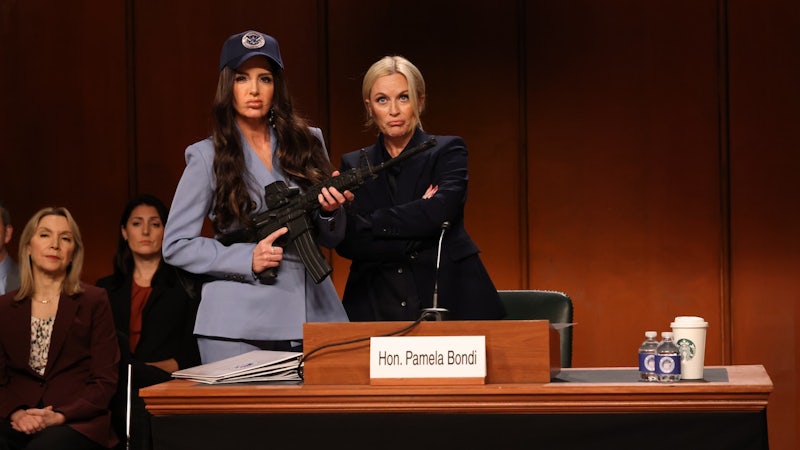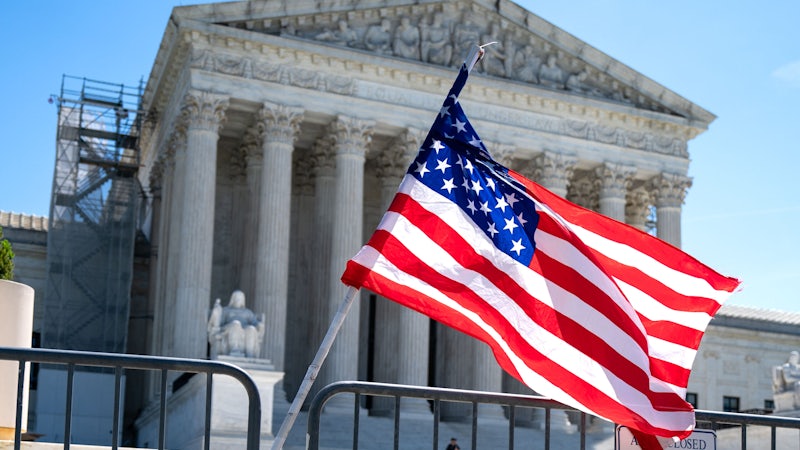When the Supreme Court in Dobbs overturned Roe v. Wade, everyone immediately recognized the case as a watershed decision that would have monumental effects on the lives of millions of people. No reproductive health decision would be quite the same. The Court’s decision to turn its back on a 50-year-old precedent immediately called to mind the confirmation hearings of many of the Justices, especially the three Trump appointees, where they were pointedly asked their views on stare decisis–the legal principle of adhering to precedent–and whether they would be faithful to prior cases. They each gave solemn indications that they would respect precedent.
For example, Justice Gorsuch praised precedent because it “adds to the determinacy of law.” Justice Kavanaugh said, “Precedent is critically important. It is the foundation of our system.” Justice Barrett promised that she would “follow the law of stare decisis, applying it as the court is articulating it, applying all the factors, reliance, workability, being undermined by later facts in law.” They all sent signals that they would be modest judges, respecting the rulings that came before them.
If the Court’s decision to overrule in Roe v. Wade left any doubt that those answers were disingenuous, the matter was definitively put to rest with the Court’s decision in Loper Bright Enterprises v. Raimondo. Loper Bright might not spark mass protests in the way that Dobbs did, but it should. It was nothing short of a revolution in the allocation of authority between unelected federal judges and politically accountable agency officials, with the Supreme Court declaring that judges are better suited than experts to answer questions about drug safety, air quality standards, financial instruments, and the host of other questions administered by regulatory agencies. The decision is breathtaking in its immodesty.
The Court in Loper Bright overruled a forty-year-old precedent, Chevron, which governed how courts review the decisions of administrative agencies. While constitutional scholars long debated the firmness of the foundation of Roe v. Wade, Chevron had been universally praised for its allocation of authority between generalist judges and expert agencies. Congress has certainly endorsed it: It has known about Chevron for decades and has authorized and reauthorized hundreds of regulatory statutes, but it never once moved to take power away from agencies, even though it could have. Under stare decisis principles, that should be reason alone to keep Chevron. If Congress has seen no reason to change the framework, even though it has the power to do so, why on earth should the Court upend a settled doctrine? Truly, stare decisis has no meaning if a case like Chevron can be overruled.
Every law student for the past four decades knows Chevron’s familiar interpretive rubric, as it has been the anchor of administrative law in the United States for decades. One class of students I taught gave me a Chevron trucker hat as an end-of-semester gift to commemorate our time together and the case’s central importance. Now the hat symbolizes little more than a time when judges recognized the limits of their own abilities.
Chevron’s central point is that when a statute leaves a particular question unanswered or ambiguous and an agency is assigned responsibility for administering that statute, the agency is better positioned to resolve the ambiguity than a court, and a court should defer to the agency’s interpretation if it is reasonable. This is a sensible rule for allocating interpretive responsibility that “reflect[s] what Congress would want,” as Justice Kagan noted in her dissent in Loper Bright. Congress, she wrote, “knows that it does not – in fact cannot – write perfectly complete regulatory statutes” and would prefer to have the inevitable ambiguities and gaps to be resolved by an agency. The agency has the relevant subject matter expertise and political accountability because agency heads report to the president.
The wisdom of this framework used to be a matter of bipartisan consensus. Indeed, this is one of the reasons why I, a lifelong Democrat, found it so uneventful to clerk for Judge Laurence Silberman, a conservative Republican judge on the United States Court of Appeals for the District of Columbia Circuit, the court that hears most challenges to administrative agency decisions. Judge Silberman and I were both faithful adherents to the Chevron framework because we agreed judges should avoid policy making. So whether that meant I had to defer to a Republican policy that I didn’t like or he had to defer to a Democratic policy that he didn’t like, we could agree that courts had no business making those calls.
As he put it, “Chevron’s rule…is simply a sound recognition that a political branch, the executive, has a greater claim to make policy choices than the judiciary.”
The Roberts Court’s rejection of this principle shows how far conservatives have come. They are no longer the advocates of judicial restraint they previously claimed to be. Far from it, they are decimating settled law at every turn. While Justice Gorsuch may claim in his concurrence that the Court’s reconsideration of precedent is an act of “judicial humility” because it acknowledges that judges do not always get things right the first time, it is hardly humble to overturn the decisions other people made with which you personally disagree. That is not modesty but a power grab.
Chief Justice Roberts wrote the majority opinion in Loper Bright, and he argued that this new framework of no deference makes sense because statutes “have a single, best meaning” and “agencies have no special competence in resolving statutory ambiguities. Courts do.” So, under the new interpretive framework he has established, where agencies get no deference, Chief Justice Roberts will now be the one deciding whether a new product on the market that is designed to promote healthy cholesterol levels is a “dietary supplement” or a “drug” under the relevant statute. It will not matter what the Food and Drug Administration thinks. Or, to take another example from Justice Kagan’s dissent, courts and not the Fish and Wildlife Service will now decide whether the Washington State population of gray squirrels is “distinct” for purposes of the Endangered Species Act. Want to know how much noise is acceptable for purposes of a statute that requires aircraft flying over the Grand Canyon National Park to “provide for substantial restoration of the natural quiet”? According to Loper Bright, John Roberts is the expert in that one, not the Department of the Interior or the Federal Aviation Administration.
At his confirmation hearing, Chief Justice Roberts said it was the job of the judge “to call balls and strikes, and not to pitch or bat.” The Loper Bright decision, however, has taken agencies out of the line-up and replaced them entirely with federal judges.
The six-justice conservative majority on the Court now stands at the ready to reverse any agency decision it does not like, unfettered by any sense of deference to the agency view. It does not take a fortune teller to predict they will favor the conservative outcomes and reject the liberal ones, for that has been the pattern of this Court. Lower court judges will certainly keep this in mind as they review agency decisions, and conservative judges will know the Court will have their back.
It is no wonder the Supreme Court has its lowest approval ratings on record, with 58% of the country disapproving of the way the Court is handling its job. Decisions like this undermine faith in the judicial process because people can see through the Court’s rhetoric of just giving statutes their one true meaning. Anyone who speaks the language knows it is not that simple. Ambiguities and gaps will give the Court license to do whatever it wants, and it is usurping authority from people who know better. People in the fields of medicine, science, finance, and all the other areas where agencies set policies for good reason.
Justice Kagan’s dissent notes that the majority decision replaces “a rule of judicial humility” with one of “judicial hubris.” And because doing so requires overruling a forty-year old precedent, she quipped that a good title for the majority opinion might be “Hubris Squared.” If you consider not just Loper Bright but the entire Term, it is clear the Roberts Court’s hubris is growing exponentially, and there is no end in sight.





























